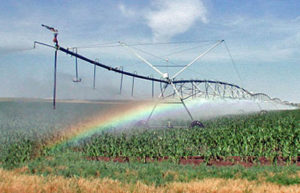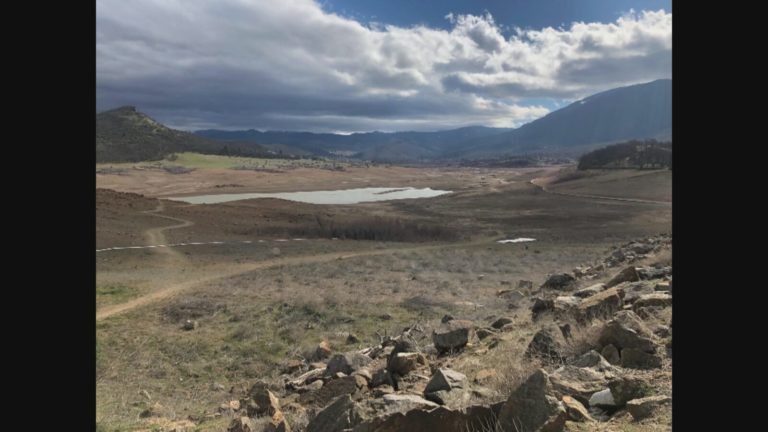by Kerul Dyer
Note from Author: With climate change impacting already over-allocated water supplies in Southern Oregon and Northern California with more frequent and severe drought conditions, the time has come to place priority in identifying solutions that work not only for well-funded enterprises and government-subsidized agriculture, but also for small farmers, Tribal cultural practitioners, and natural inhabitants, including fish and wildlife. Infrastructure improvements, however important to mitigate evaporation waste and runoff pollution, will not solve the water crisis in our region. Equitable water solutions, including changes to agricultural operations and waste reduction measures for major water users are not an aspirational choice, but a necessary task to avert ecological, social, and economic fractures in the near future.
Water planners and users in the Rogue Valley and Klamath Basin are bracing for yet another year of historically low water levels. With no end in sight to the ongoing problem of “not enough water to go around,” priorities and processes for how to deliver water to irrigators, residents, and industries (while hopefully leaving some for nature) means that water managers must think creatively to satisfy the varied interests. This is on top of complying with federal and state laws, designing infrastructure improvements, and promoting incentive programs to help those without reliable water sources during the hottest months of the year. Plainly stated, improving drought resilience while also preserving the character and living systems in the Klamath-Siskiyou region is no easy task.
In a recent video interview, Rogue Riverkeeper’s Program Director, Frances Oyung, spoke with Shavon Haynes, Jackson County’s watermaster. Haynes’ message to viewers was clear, as he showed hydrology maps and irrigation delivery systems: there is simply not enough water to go around for current demand in the Rogue Valley. The degree of severity of the water shortage this year is yet to be known.
 According to the Talent Irrigation District’s website, TID deliveries will be available early in the season, but will likely cut off early, perhaps even before last year’s historic July 2021 cutoff. And farmers and industries who depend on the Rogue River Valley Irrigation District will be receiving flows beginning in mid-May, albeit in an abbreviated season – and sourced solely from the Agate Reservoir, for the first time ever. In Ashland, as water shortages may mean curtailments for residents and businesses, the city is taking a close look at the irrigated Oak Knoll municipal golf course. Last year, the city of Ashland paid $34,000 in a single month to keep the course green when the TID flows were conserved during June.
According to the Talent Irrigation District’s website, TID deliveries will be available early in the season, but will likely cut off early, perhaps even before last year’s historic July 2021 cutoff. And farmers and industries who depend on the Rogue River Valley Irrigation District will be receiving flows beginning in mid-May, albeit in an abbreviated season – and sourced solely from the Agate Reservoir, for the first time ever. In Ashland, as water shortages may mean curtailments for residents and businesses, the city is taking a close look at the irrigated Oak Knoll municipal golf course. Last year, the city of Ashland paid $34,000 in a single month to keep the course green when the TID flows were conserved during June.
In the Klamath Basin this month, as hydroelectric dam removal received final approval for implementation, 50,000 cubic-feet of water began to be released from the Klamath Lake into the A Canal for Klamath Reclamation Project water users, and an additional draw of 25,000 cubic-feet directed to the Klamath River.The release represents the full amount the Bureau of Reclamation has approved to release throughout the season. Don Gentry, the Chairman of the Klamath Tribes was one of dozens of tribal members who were present at the Headgate when the water began to flow. He cautioned that by releasing the water from the lake, the extremely endangered C’waam fish would be harmed once again, and expressed compassion for suffering farmers, who would need to change the way they operate to adapt to a future with less water.


